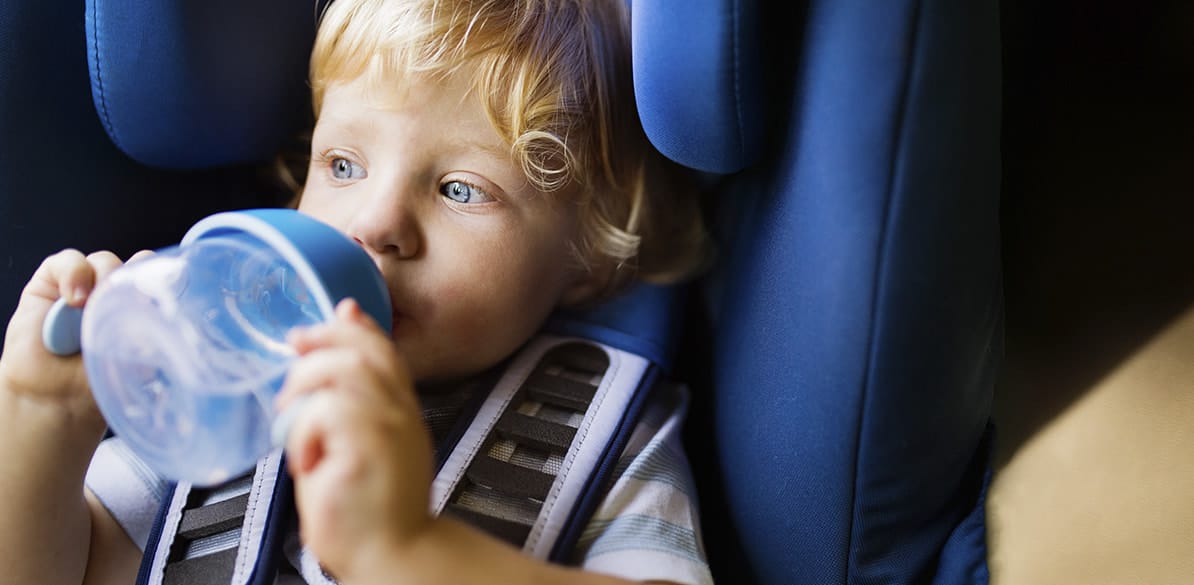The importance of keeping children hydrated on journeys

Staying hydrated is fundamental at all stages of life and especially in infancy and childhood.When travelling by car, particularly in the summer, you should be aware of the amount of liquid that young children need, since they can get dehydrated quite easily.
Of course, the same amount of water will not be needed in winter as in summer. The heat leads to sweating and the need to rehydrate. Young children, especially those who are breastfed, are among those most likely to suffer from dehydration. In fact, healthy, breastfed babies lose more liquid than an adult in proportion to their body weight. Moreover, they have immature renal systems that need to eliminate more liquids.
Experts recommend that babies ingest fluids equivalent to about 15% of their body weight. Newborn babies have a higher percentage of fluid in their bodies.
Breastfed babies do not need to drink water since their mother’s milk provides them with all the liquid they need. For this reason, you should bear in mind that during a trip, the baby should be breastfed on demand or whenever necessary, given that breast milk has mineral salts and electrolytes that prevent dehydration. During a trip, you should stop at rest stops whenever necessary to give the baby this vital hydration, especially when travelling by car, since due to the heat the baby will need more hydration and hence will need to be breastfed more often.
Past 6 or 7 months old, the child may also need to drink water. Babies that are bottle-fed can be given extra mineral water with a bottle too. As the child grows, hydration will not only come from the mother’s milk or from water, but also through eating other foods. However, the right amount of hydration can vary based on the child’s characteristics and, of course, the heat. On a car trip in the summer heat, the child may need water much more frequently. The heat causes the body to lose more liquid through sweating and, therefore, the lost fluids must be constantly replenished.However, it is not only sweating which leads to fluid loss. If the child has diarrhoea he or she must be given liquids much more frequently.
In addition to water, the child can drink other natural liquids such as lemonade, juices, fruit or milkshakes.
During journeys, these liquids should be offered to children even if they do not request them or feel thirsty. Some of the symptoms of severe dehydration are a lack of tears, a dry mouth or tongue, sunken eyes, a greyish skin colour, decreased urination and symptoms of lethargy or irritability.
Temperature is also very important.A high temperature inside the car increases sweating and, consequently, fluid loss. You should also be aware that turning on the air conditioning can increase the risk of dehydration due to the dryness of the air and the low humidity caused by the air conditioning.
Therefore, children should travel in appropriate clothing that is comfortable, not too warm, breathable, made of cotton and that allows them to move freely. The temperature inside the car should be around 21 to 23 degrees Celsius, i.e., a comfortable temperature that is neither too hot nor too cold so that children can travel in comfort. You should also ensure that the air conditioning is not blowing directly on the child.
Furthermore, you should avoid heavy meals during the journey and we recommend that you take several bottles of mineral water in the car in order to regularly hydrate the child during the trip.
